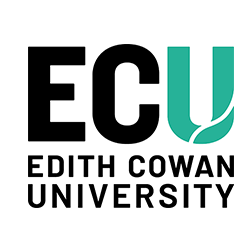Author Identifier (ORCID)
Julia Butt: https://orcid.org/0000-0003-4714-2252
Abstract
Background: Digital interventions can help to overcome barriers to care, including stigma, geographical distance, and a lack of culturally appropriate treatment options. “We Can Do This” is a web-based app that was designed with input from cultural advisors and end users to support Aboriginal and Torres Strait Islander people seeking to stop or reduce their use of methamphetamine and increase psychosocial well-being. Objective: This study aimed to evaluate the effectiveness of the “We Can Do This” web-based app as a psychosocial treatment for Aboriginal and Torres Strait Islander people who use methamphetamine. Methods: The web app was evaluated using a randomized waitlist controlled parallel group trial. Participants were Aboriginal and Torres Strait Islander people aged 16 years or older who self-identified as having used methamphetamine at least weekly for the past 3 months. Participants were randomized on a 1:1 ratio to receive either access to the web-based app for 6 weeks or a waitlist control group. Both groups received access to a website with harm minimization information. The primary outcome was days of methamphetamine use in the past 4 weeks assessed at 1, 2, and 3 months post randomization. Secondary outcomes included severity of methamphetamine dependence (Severity of Dependence Scale [SDS]), psychological distress (Kessler 10 [K10]), help-seeking behavior, and days spent out of role due to methamphetamine use. Results: Participants (N=210) were randomized to receive either access to the web-based app (n=115) or the waitlist control condition (n=95). Follow-up was 63% at 1 month, 57% at 2 months, and 54% at 3 months. There were no significant group differences in days of methamphetamine use in the past 4 weeks at 1 the month (mean difference 0.2 days, 95% CI -1.5 to -2), 2 months (mean difference 0.6 days, 95% CI -1 to 2.4 days) or 3 months (mean difference 1.4 days, 95% CI -0.3 to 3.3 days) follow-up. There were no significant group differences in K10 scores, SDS scores, days out of role, or help-seeking at any of the 3 follow-up timepoints. There was poor adherence to the web-based app, only 20% of participants in the intervention group returned to the web-based app after their initial log-in. Participants cited personal issues and forgetting about the web-based app as the most common reasons for nonadherence. Conclusions: We found poor engagement with this web-based app. The web-based app had no significant effects on methamphetamine use or psychosocial well-being. Poor adherence and low follow-up hindered our ability to accurately evaluate the effectiveness of the web-based app. Future web-based apps for this population need to consider methods to increase participant engagement.
Document Type
Journal Article
Date of Publication
1-1-2025
Volume
27
Publication Title
Journal of Medical Internet Research
Publisher
JMIR Publications
School
School of Arts and Humanities
Funders
Sylvia and Charles Viertel Senior Medical Research Fellowship / National Health and Medical Research Council Grant
Grant Number
NHMRC Numbers : 1117582, 1100696
Creative Commons License

This work is licensed under a Creative Commons Attribution 4.0 License.


Comments
Reilly, R., McKetin, R., Barzi, F., Degan, T., Ezard, N., Conigrave, K., ... & Ward, J. (2025). Web-based application for reducing methamphetamine use among Aboriginal and Torres Strait Islander People: Randomized waitlist controlled trial. Journal of Medical Internet Research, 27, e58341. https://doi.org/10.2196/58341